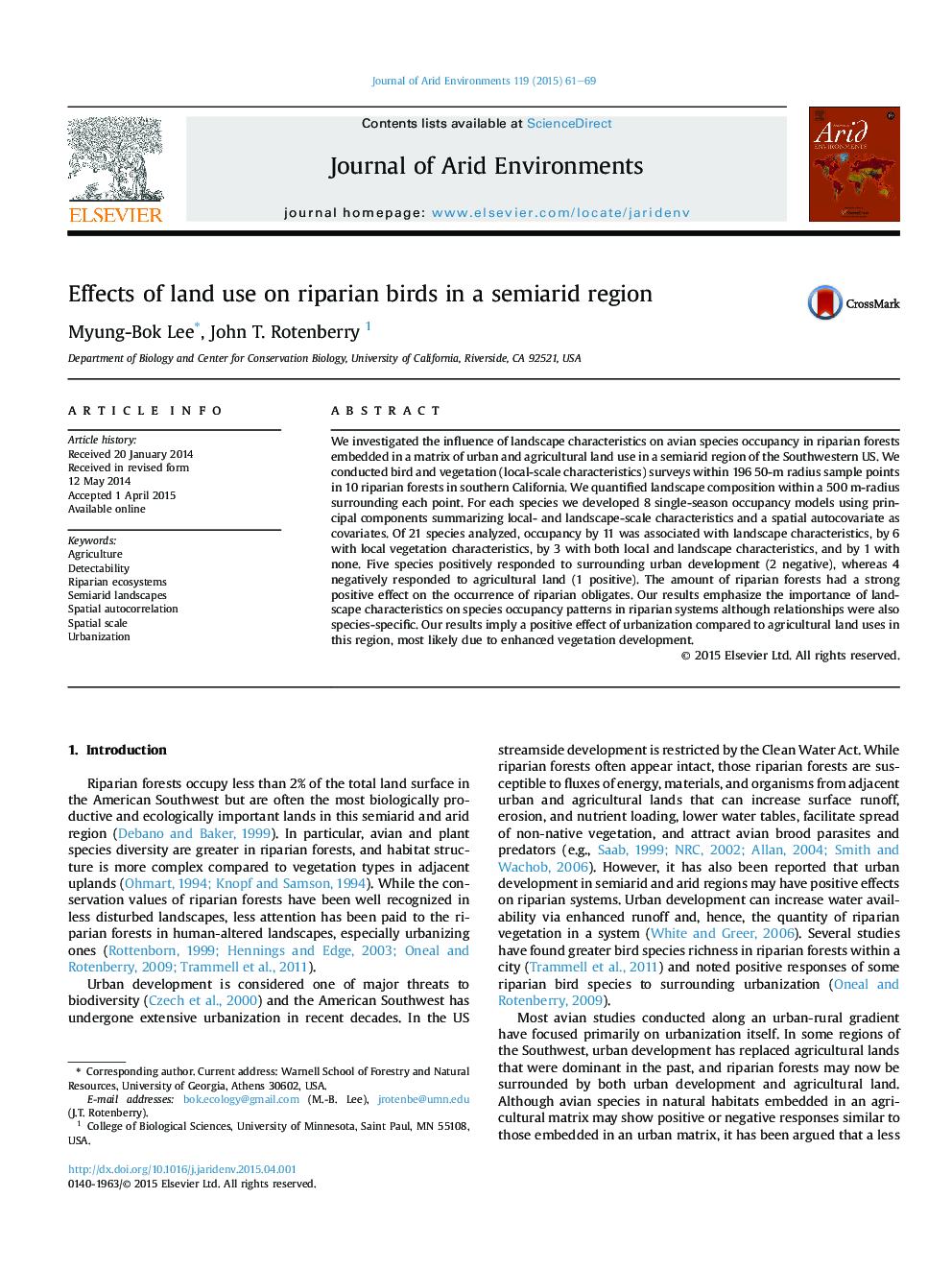| Article ID | Journal | Published Year | Pages | File Type |
|---|---|---|---|---|
| 6303411 | Journal of Arid Environments | 2015 | 9 Pages |
Abstract
We investigated the influence of landscape characteristics on avian species occupancy in riparian forests embedded in a matrix of urban and agricultural land use in a semiarid region of the Southwestern US. We conducted bird and vegetation (local-scale characteristics) surveys within 196 50-m radius sample points in 10 riparian forests in southern California. We quantified landscape composition within a 500Â m-radius surrounding each point. For each species we developed 8 single-season occupancy models using principal components summarizing local- and landscape-scale characteristics and a spatial autocovariate as covariates. Of 21 species analyzed, occupancy by 11 was associated with landscape characteristics, by 6 with local vegetation characteristics, by 3 with both local and landscape characteristics, and by 1 with none. Five species positively responded to surrounding urban development (2 negative), whereas 4 negatively responded to agricultural land (1 positive). The amount of riparian forests had a strong positive effect on the occurrence of riparian obligates. Our results emphasize the importance of landscape characteristics on species occupancy patterns in riparian systems although relationships were also species-specific. Our results imply a positive effect of urbanization compared to agricultural land uses in this region, most likely due to enhanced vegetation development.
Keywords
Related Topics
Physical Sciences and Engineering
Earth and Planetary Sciences
Earth-Surface Processes
Authors
Myung-Bok Lee, John T. Rotenberry,
